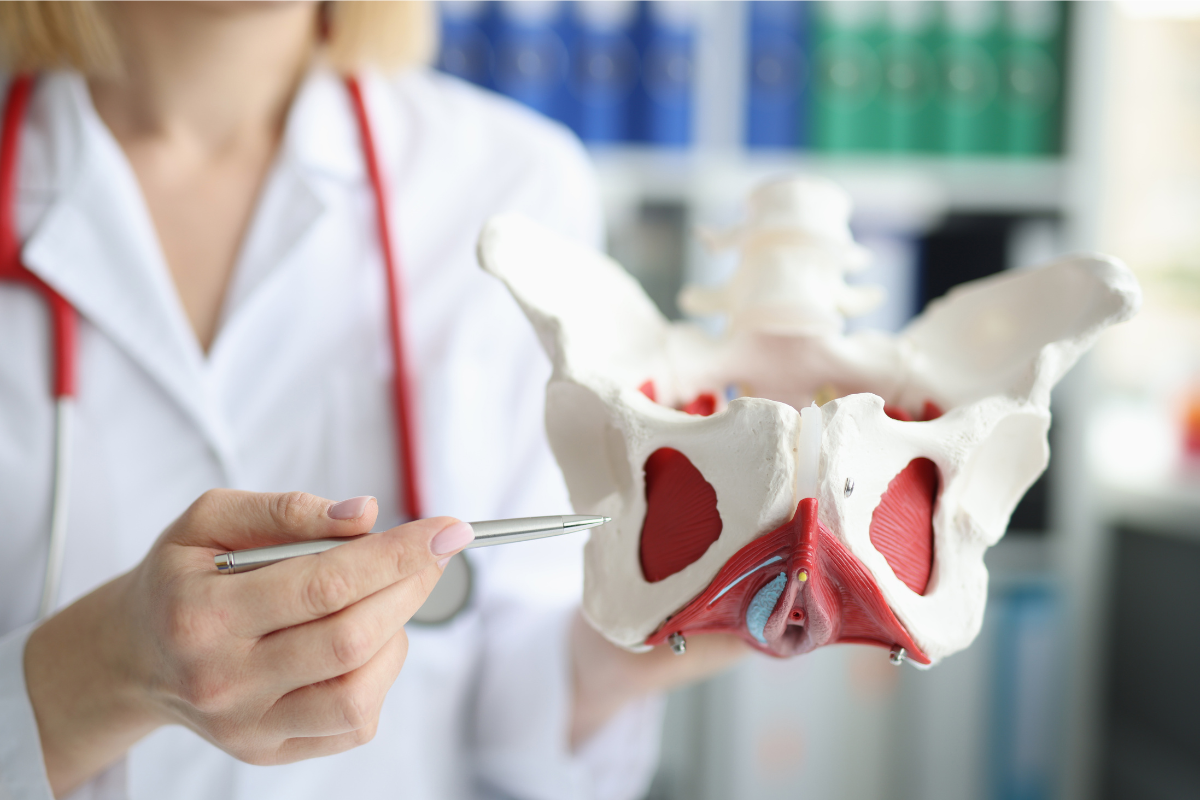GSM: Genitourinary Syndrome of Menopause

There are several vaginal symptoms women commonly experience during menopause, and there hasn’t been a name to describe all of them–until now.
What is GSM?
GSM is a term coined in 2014 by the International Society for the Study of Women’s Sexual Health and the North American Menopause Society.
Before the GSM terminology was introduced, health providers used the terms ‘vulvovaginal atrophy’ and ‘atrophic vaginitis’ to describe some of the most frequent genital, urinary and sexual symptoms reported by women during menopause.
However, these terms did not cover the full spectrum of women’s experiences. They also failed to identify the reduction in estrogen levels as the root cause of menopausal issues.
Moreover, the word ‘atrophy’ suggested that symptoms are permanent even though many of these symptoms are readily treatable with estrogen.
On the other hand, the term GSM recognizes the negative impacts genitourinary issues can have on a woman’s quality of life. It aims to help someone partner with their healthcare provider to find better diagnostic, management and treatment opportunities for their GSM symptoms.
How Prevalent is GSM in Menopausal Women?
Up to 90% of postmenopausal women experience GSM. Even so, the number of women experiencing GSM is likely under-reported and under-treated. Only about 25% of women discuss their symptoms with their provider, often because they see their discomfort as a normal part of aging.
The majority of GSM symptoms stem from the drop of estrogen that naturally occurs in a woman’s body during midlife.
Some of the most common symptoms include:
- Dryness, burning and irritation of the vagina
- Lack of vaginal lubrication leading to discomfort, pain and decreased sexual satisfaction during intercourse
- Increase in urinary urgency and recurrent urinary tract infections
Body Parts Related to GSM
Understand the key parts of your body involved in GSM:
- Vulva. The vulva is the external opening of the vagina. It includes the clitoris, labia and the opening of the vagina. It is commonly misidentified as the vagina, which is actually only the internal part.
- Vagina. The vagina is the muscular tube leading from the external genitals to the cervix of the uterus. It is the part that expands when you have sex, birth a baby or insert a tampon.
- Clitoris. The clitoris is a small, sensitive erectile tissue structure at the top of the vulva where the labia meet. It has 8,000 nerve endings and is therefore highly sensitive. For many women, stimulating the clitoris is the best way to orgasm.
- Urethra. The urethra is the tube that transports urine from the bladder and to empty it outside the body. The opening of the urethra is right below the clitoris.
GSM Treatment Options
GSM symptoms are usually chronic, which means they rarely go away on their own and can worsen if left untreated. Below are treatment options specifically for GSM:
Over-The-Counter Products
The first-line treatment for mild vaginal dryness is over-the-counter vaginal moisturizers and lubricants.
- Moisturizers help manage vaginal dryness by soothing irritated and dry skin but do not address the underlying cause. Think of these products like body lotion or lip balm.
- Lubricants are specifically for use during sex or other irritating activities.
It is possible that non-prescription options may not fully address your concerns, especially because vaginal dryness worsens in postmenopause. In this case, we recommend that you discuss prescription options with your healthcare provider.
Local Estrogen Products
Local estrogen treatments for vaginal dryness are different from menopausal hormone therapy (MHT). Studies show that they are much safer because the hormone dosage is much lower than that of MHT and is not absorbed into the rest of the body in the same way as MHT.
Local prescription treatments work by prompting the tissues to act more like they did premenopause, but they only work as long as you continue to use them.
The right choice for you will depend on your medical history, insurance coverage, application preferences and individual success with each option.
Read if you are currently on MHT:
MHT often successfully manages vaginal dryness in addition to other menopause symptoms. However, it’s also normal to need additional local vaginal estrogen to fully treat GSM. Be sure to talk to your healthcare provider if you are not seeing relief from GSM symptoms after a couple of months on MHT.
Types of local estrogen treatments:
1. Topical Estrogen Cream
Estrace (estradiol), Premarin (conjugated estrogens) and Estragyn (estrone)
- Creams applied around and inside the vaginal opening
- Typically applied daily for two weeks and then two to three times per week on an ongoing basis
2. Vaginal Estrogen Inserts
Imvexxy, Vagifem and Yuvafem
- Inserted into the vagina to deliver the medication
- Typically inserted daily for the first two weeks and then two to three times per week on an ongoing basis
3. Slow Release Intravaginal Ring
Estring
- Inserted into the vagina to slowly release estrogen
- Replaced every 90 days
Who shouldn’t use local estrogen products
If you have a current or past cancer diagnosis, history of blood clots or are experiencing vaginal/uterine bleeding, talk to your healthcare provider about whether local estrogen products are appropriate for you.
Non-Estrogen Products
1. DHEA Vaginal Inserts
Non-estrogen steroid also known as prasterone
- Capsule inserted daily into the vagina, with or without an applicator.
- Different than estrogen inserts, both appear effective
2. Oral Medication
Osphema (ospemifene)
- The only oral medication on the market to treat vaginal dryness and painful sex
Other Options to Know
1. Topical Lidocaine (prescription)
Lidocaine is a topical numbing agent that can be applied directly to the tissues around the vaginal opening. Using a 4% lidocaine medication before sexual activity can help decrease pain, although it does not address the root cause of the pain.
Tip: Lidocaine needs some time to start working, so most people find that they need to apply it 20-30 minutes before sex.
2. Laser
diVa (Er:YAG laser), Mona Lisa Touch and Femilift (fractional CO2 laser)
- Laser creates mild injury to the vaginal tissues, which is meant to stimulate them to regrow and rebuild
- Not FDA-approved to treat vaginal dryness but use is becoming more common
- North American Menopause Society states that there is currently not enough evidence to recommend it for routine use, although small studies have been promising
What To Avoid When You Have GSM
- Fragrant products. The worst things you can do for your vaginal area includes using fragrance-containing products near your vagina, like wipes, bubble baths and scented soaps and lotions. Your vaginal area doesn’t need any help to stay clean. In fact, recent research has discovered that your vulvovaginal area has its own microbiome and applying products can upset its healthy balance.
- Tobacco. Studies have shown that tobacco use is strongly associated with vaginal dryness and tissue thinning.
- Breathable cotton underwear. You can limit skin irritation by choosing breathable cotton underwear and avoiding shaving or waxing practices.
Best Practices for GSM
You might be wondering, ‘With all of those options and scenarios, what is the best treatment for my GSM symptoms?’
The best way to figure this out is to speak to your gynecologist, who will be able to have a comprehensive discussion with you and formulate an appropriate plan of action.
While GSM is extremely common, there are solutions available to let you enjoy life, including sexual intimacy. For more support addressing painful sex, see the articles linked below.
If you are experiencing symptoms that are out of the ordinary to you, especially if it is causing discomfort, pain or an overall reduction in your quality of life, please speak to your healthcare provider.
Sign up for more unique women’s health content
By submitting this form, you agree to the Lisa Health Privacy Policy and Terms of Use


